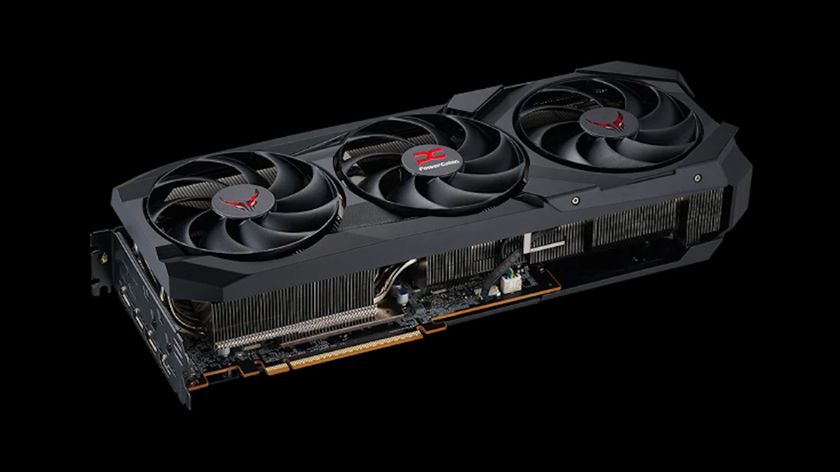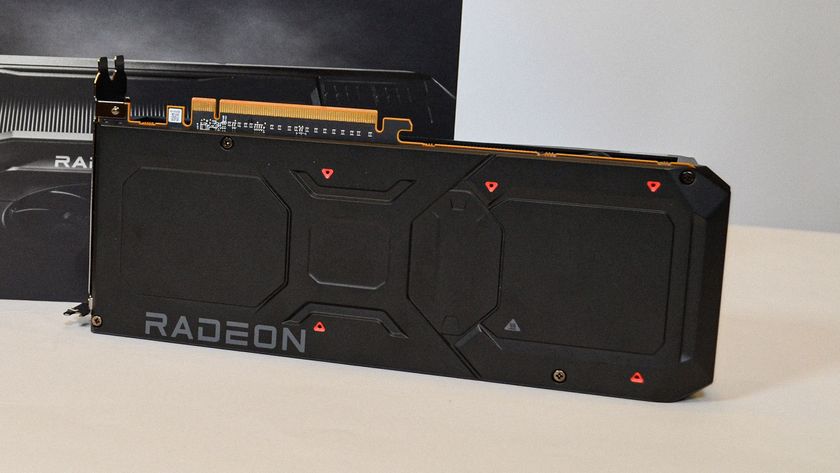Here’s why we shouldn’t get carried away with Nvidia’s DLSS 3 frame rate booster
DLSS 3 gains aren’t as big with contemporary games

Nvidia’s big RTX 4000 graphics card reveal on September 20 also incorporated a fresh take on its frame rate boosting technology, with boasts that it can speed up things massively – although further examination of the details Team Green spilled on DLSS 3 produces some noteworthy caveats.
If you recall, Nvidia claimed that DLSS 3 is capable of boosting frame rates by up to four times, meaning the upscaled game is up to quadruple the speed of native resolution – no mean feat to say the least.
That came with proof of DLSS 3 in Cyberpunk 2077 witnessing a jump from 22 frames per second (fps) at native resolution (4K) to 85 fps with DLSS 3 and the new Ray Tracing: Overdrive Mode for the game (that’s being introduced in the near future). Alongside that, Portal with RTX showed over a 550% increase.
This was on a rig with an RTX 4090 graphics card, Intel Core i9-12900K processor, plus 32GB RAM, by the way.
However, those huge fourfold or fivefold boosts look like the exception rather than the rule, as you might imagine – the picture is very different with a bunch of contemporary games that have benchmarks provided by Nvidia.
F1 2022 is shown with a 2.5x gain (with ray tracing on) thanks to DLSS 3, and Microsoft Flight Simulator saw its frame rate doubled (from 50 fps to 100 fps). Warhammer 40,000: Darktide also witnessed a doubling in frame rate (just over, actually).
In a further graph PC Gamer flagged up, Assassin’s Creed Valhalla achieved a more modest 1.5x increase, and both The Division 2 plus Resident Evil Village showed around a 1.7x boost (with an RTX 4090, this is).
Get daily insight, inspiration and deals in your inbox
Sign up for breaking news, reviews, opinion, top tech deals, and more.
Bear in mind the other main caveats with DLSS 3, namely that it’s for RTX 4000 graphics cards only (the RTX 4090 and two spins on the RTX 4080 to begin with), and also the game has to support it as well. Nvidia has told us that over 35 games (and apps) will be on-board to begin with (though some of those are titles set to be released in the future).
Analysis: Temper expectations – and could there be some initial bumpiness?
It seems, then, that more like the order of 1.5x to 2x frame rate boosts are going to be typical for DLSS 3, rather than the quadrupling action going on with this new tech for some of the top-performing titles in the future. In short, temper your expectations somewhat if you’re envisaging some of the wild boosts Nvidia put forward to be more commonplace – they won’t be coming to existing games, it seems.
Of course, it’s no real surprise to see some cherry-picked marketing with the very fastest games being highlighted, because that’s how new product launches work – you show off something in its best light.
What’s also worth noting here is that we’ve been hearing a bit of chatter from the grapevine on DLSS 3 from YouTube leaker Moore’s Law is Dead (MLID), who also had plenty of interesting stuff to say on the pricing of Nvidia’s next-gen Lovelace graphics cards. MLID cautions that he has heard that when there’s a lot of motion on-screen, and tons of action going on, there could be artifacts with DLSS 3. In other words, this initial incarnation of DLSS 3 may perhaps be rougher around the edges than DLSS 2.0 was out of the gate; but that really is pure speculation.
We won’t know how DLSS 3 really performs until we actually get to try out the tech, of course, and what we do know is that we can’t wait to see how much of a frame rate boost is coming with an even broader selection of PC games to give us a better idea of what we’re looking at on average for gains.
Darren is a freelancer writing news and features for TechRadar (and occasionally T3) across a broad range of computing topics including CPUs, GPUs, various other hardware, VPNs, antivirus and more. He has written about tech for the best part of three decades, and writes books in his spare time (his debut novel - 'I Know What You Did Last Supper' - was published by Hachette UK in 2013).



